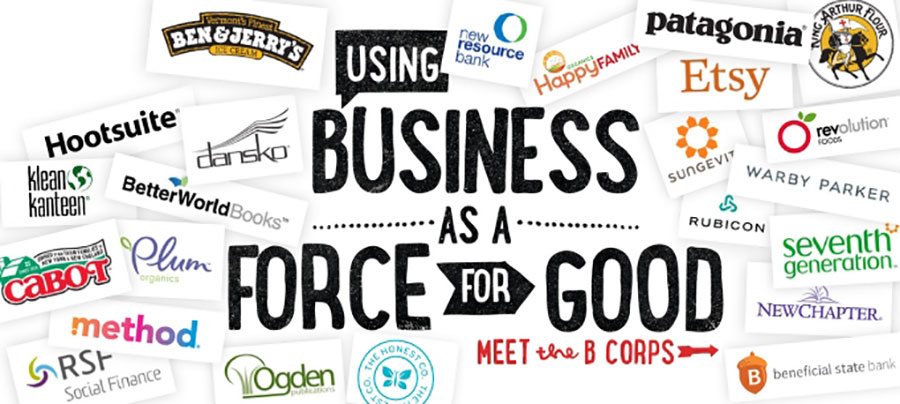“Leaders aren’t born; they are made. And they are made just like anything else, through hard work.”
Those are Vince Lombardi’s words, but I can relate. Leading my company through the rigorous B corp certification process changed our company’s profile and had a profound effect on the way I approach leadership.
Leading an organization through transformational change is a delicate balance of acknowledging fear of the unknown while inspiring buy-in and commitment. It’s daunting, especially when you consider that more than 70 percent of change initiatives undertaken by companies fail.
The decision to pursue B corp certification was the right step for our company. Like many other businesses, sustainability was always important to us, and we wanted to grow our commitment to directly and broadly improve the social and environmental impact of our operations.
Lighting the Way Toward Change
Navigating change is easier when there is a clear alignment between purpose, brand, and the content of the change. As we looked ahead, the changes required to become a certified B corp aligned perfectly with our corporate purpose and pushed us further down the path of modeling a sustainable approach to business.
The nature of our work put us ahead on our journey, but the process still wasn’t easy. Guiding my organization through the changes needed to achieve such uncompromising certification standards taught me some powerful lessons in leadership:
- Use a credible structure.
Use an existing, well-researched framework to help you understand the relevant benchmarks, set clear goals, and focus your efforts on leading the change rather than on inventing a structure to manifest it.
We’re not experts in sustainability reporting structures, so my first job as a leader was to explore different options to determine what made sense for us. In the end, the free B Impact Assessment was the right fit for us. It follows the triple bottom line approach and is suited to smaller companies.
The results are published online, fulfilling an important part of the transparency component. The tool prompted us to carefully examine our business through an outside lens and guided the decisions we needed to make.
- Identify and articulate why you do what you do.
With a structure in place, you now have to communicate a compelling case for change. If you can’t clearly state your company’s overarching purpose, you’ll never achieve true engagement across the organization.
Author Simon Sinek puts it this way: “People don’t buy what you do; they buy why you do it.” When you can credibly and consistently connect your goals to your purpose — your “why” — you’re well on your way.
At the start of the B corp certification process, we were expressing our purpose in many different ways. It crystallized for me when a colleague explained how she struggled to find the right words when asked what our company does. We needed to arrive at our core purpose and then express it the same way in every conversation, employee meeting, and customer presentation.
It’s not always easy to distill your efforts and products down to a simple unifying purpose, but it’s critical to do so. You might try brainstorming with a diverse group of people and perspectives or hire a skilled brand consultant to help peel back the corporate onion and get to the essence of why you do what you do.
With some open minds up to the challenge, we came away with a simple, straightforward statement: “We help business leaders reduce the needless consumption of resources related to printing.”
This statement, which distills our essential “why,” gave employees something to believe in and helped us through the changes we were making to achieve B corp certification. It gave us a simple way to articulate our story, both internally and externally.
- Don’t fight the friction.
Nearly half of senior managers claim their change management endeavors fizzle right as it’s time to execute. Some friction is unavoidable, especially with big changes; as a leader, you need to embrace it.
In our case, the main source of friction came from honestly assessing how our company was living our purpose and how we could do better. For example, we instituted a recycling and composting program to mitigate our environmental impact. Knowing we wouldn’t be successful with a mandate, we approached it with a mix of leadership by example, education, and — most importantly — employee advocates.
The key for us was identifying the change sponsors, change agents, and change targets within our organization. Having these roles in place helped us anticipate the uncertainties and stress points employees might experience as we implemented the change.
As a leader, it’s also important to share and celebrate achievements along the way to recognize progress, create positive perceptions, and reinforce new behaviors.
- Feed the fire.
As commitment to change grows, recognizing individual contributions makes it contagious — i.e., it feeds the fire. In fact, as more people buy in, pour gasoline on the fire whenever you can.
Enlist the help of early adopters who recognize the value of the change and are willing to lead special interest groups. To help manage our recycling program, our sustainability interest group meets each month over lunch. It’s an engaged team that has proven to be highly and consistently productive.
Share your enthusiasm for the group’s efforts via internal communications. Snap a photo of them taking care of the recycling or compost and put it on your internal website. Give them first shot at using the returned compost for gardening at home. Let them choose where to get lunch for a companywide recycling orientation. Lather, rinse, and repeat.
To paraphrase Lombardi, leading change is hard work. When everyone is listening and watching what you do, you have to learn your lessons and apply them as you go. Inspiring people to buy into a common vision and commit to it — even when it’s exceedingly difficult — is both the challenge and the reward of successful leadership.




































